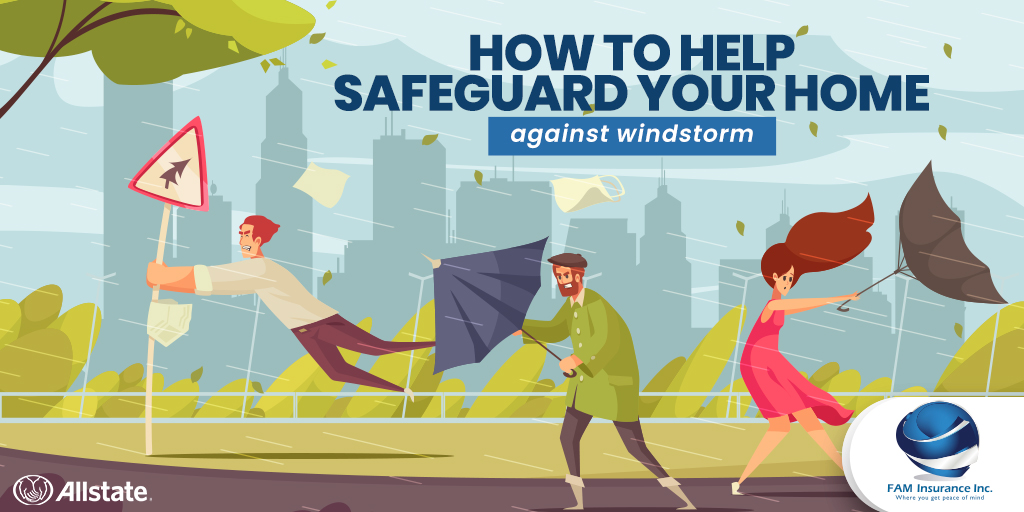You don’t have to live in a hurricane or tornado zone for your home to sustain wind damage. Anyone in an area that experiences thunderstorms can also be at risk, according to the National Severe Storms Laboratory. The good news, though, is that there are steps you can take to help protect your property from wind damage.
Routine maintenance is one important step. Start by making repairs to parts of your home that are especially vulnerable to wind damage, like loose or damaged siding, shingles, roofing material or brickwork, says the Federal Emergency Management Agency (FEMA). Here are other important steps you can take, according to FEMA:
Cover windows and doors
Installing a system of permanent storm shutters over windows and doors is your most reliable protection against high winds, says FEMA, but replacing your windows with impact-resistant models is another viable option. Less-costly preventive measures, according to FEMA, include installing sliding bolts at the tops and bottoms of double-entry doors (to help secure them to the door frame), and making temporary plywood window and door coverings in advance of high-wind warnings.
Anchor outbuildings
If you have a storage or garden shed that isn’t on a permanent foundation, heavy wind could potentially knock it into your home, says FEMA. You can use anchors and tie-downs that are normally used for manufactured homes to help secure these types of outbuildings.
Secure outdoor gear
Any outdoor gear that can be moved by wind is also a potential projectile, according to FEMA. If you have advanced warnings of a storm, FEMA says you can simply move these outdoor furnishings indoors, if it’s safe to do so. If you live in an area with frequent high-wind warnings, consider bolting furniture and grills to a deck or patio, or using cable or chains to attach them to ground anchors each season. You can also use the same method to secure trash cans. Or, simply attach cans to firmly secured wood posts, adds FEMA.
Protect roofing
Roofs are most susceptible to hurricane-force winds, says FEMA, so proper installation matters. You’ll want to inspect your roof from the attic, and check to see whether your sheathing (the plywood nailed to your rafters) was properly installed. If many nails have missed the rafters, you may need to contact a professional to re-nail the sheathing for you, FEMA says. Bracing your roof’s side walls with 2-by-4s and installing hurricane straps to secure your roof to the walls are two other protective options to consider. Though, this sort of work may be difficult for the typical homeowner, notes FEMA, so you may need to call in a professional to get it done.
Reinforce garage doors
High winds can damage garage doors or even cause them to cave in, which can leave the contents of the garage exposed. FEMA suggests having a professional inspect your current setup, so that you can decide how to retrofit your door. Some options include installing thicker brackets on the tracks and adding hardware to brace the back of the door itself. In some cases, an inspection might indicate that a new, stronger door is your garage’s best defense.
Inspect and trim trees
Examine trees and remove any branches that can fall on your home, or on adjacent power lines, says FEMA. Using professionals can be important here, because improper pruning can make a tree more susceptible to storm damage, FEMA notes. Appropriate planting methods are also important. The distance between your home and a tree, for instance, should be greater than the height of the fully grown tree, says FEMA. This may help prevent the tree from damaging your home if it were to fall.
Wind can bring potential damage to what’s in its path. But if you take the time to plan for it, you may help keep your home safe during the next big storm.

